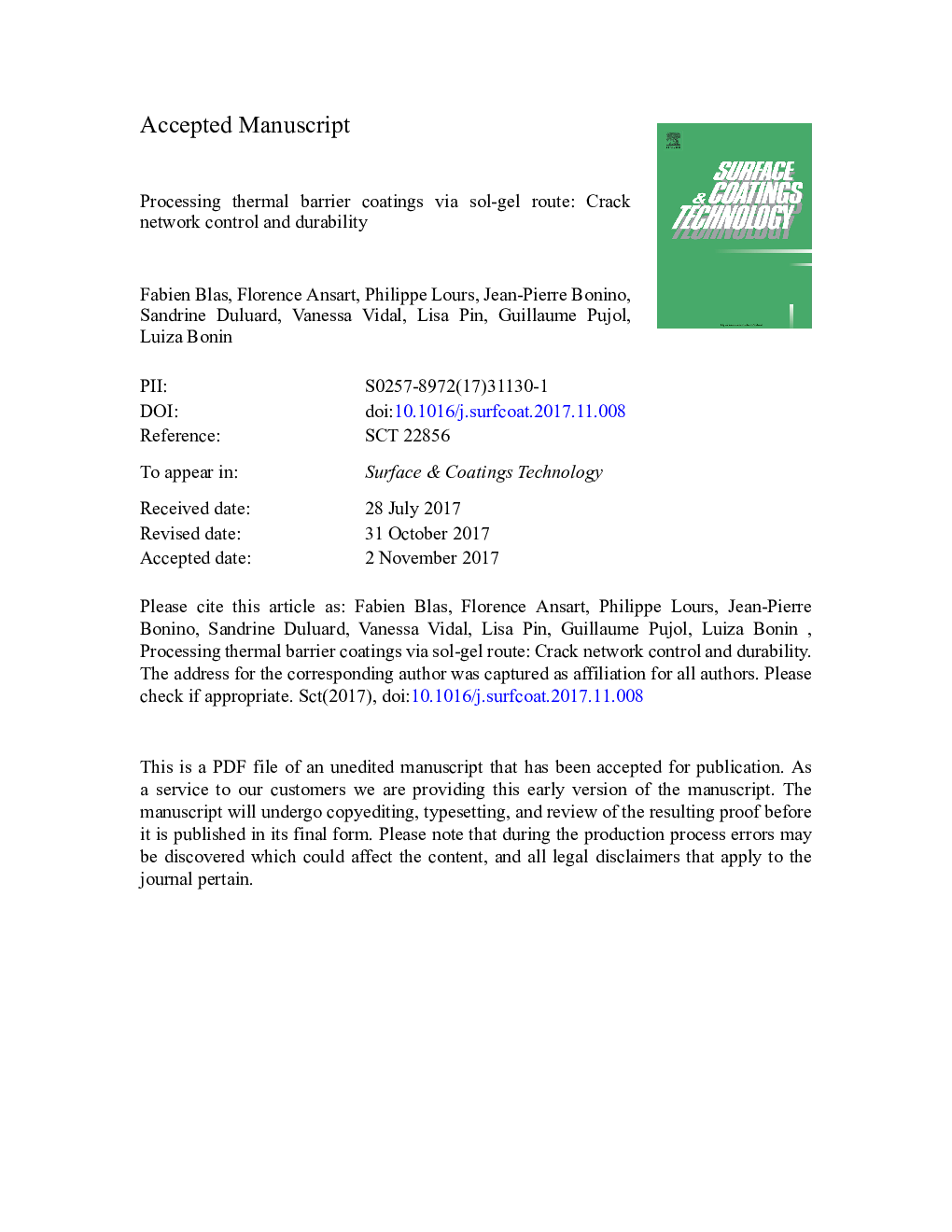| Article ID | Journal | Published Year | Pages | File Type |
|---|---|---|---|---|
| 8024482 | Surface and Coatings Technology | 2018 | 28 Pages |
Abstract
Thermal barrier coatings (TBC) processed by sol-gel route are deposited onto NiPtAl bond coated superalloy substrates. A crack microstructure, if well controlled, is adequate to get satisfactory thermo-mechanical behaviour when the TBC is cyclically oxidized. This paper deals with the adjustment of the properties of the micro-cracked network which is inherent to the process by changing the formulation of the sol and by adding a reinforcement step. The objective is to reduce the size and depth of the surface cracks network. This network controls the release of thermo-mechanical stress in the layers and reduces detrimental propagation of cracks that could result in the spallation of the coatings during engine operation. Several physico-chemical characterizations were performed, associated to image analyses to (i) evaluate the cracks distribution (depth, length and width), in the case of two dispersants, and (ii) to estimate their influence on the performances of TBC systems. Characterizations by cyclic oxidation were carried out using a cyclic oxidation instrumented rig to monitor on a real time basis the crack propagation and spallation. Correlations between the cracked network parameters and the lifetime of the TBC are proposed in this paper.
Related Topics
Physical Sciences and Engineering
Materials Science
Nanotechnology
Authors
Fabien Blas, Florence Ansart, Philippe Lours, Jean-Pierre Bonino, Sandrine Duluard, Vanessa Vidal, Lisa Pin, Guillaume Pujol, Luiza Bonin,
